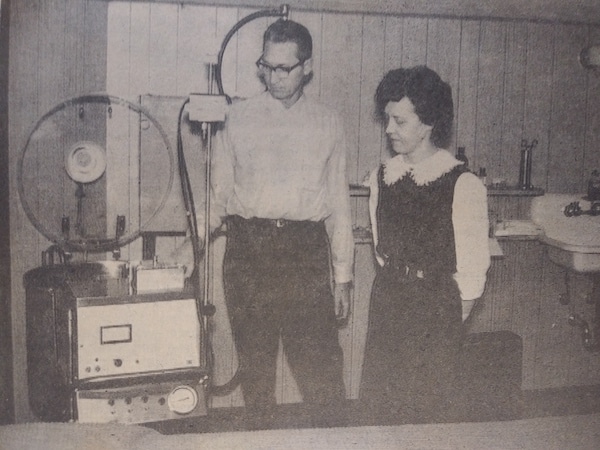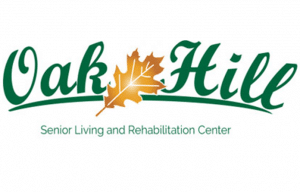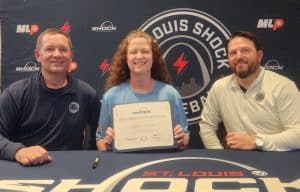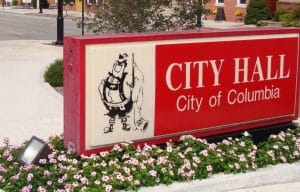A legacy of community caring

Monroe County communities have a long history of helping out when the need arises, especially when one’s health is involved.
Locals were able to show the area’s generosity to the nation 55 years ago.
In March 1966, the people of southwestern Illinois rallied around Waterloo native Ruth Votrain during her battle with a deadly kidney disease.
A fundraising drive with a goal of $10,000 netted in excess of $16,500. Nearly $4,000 of that came from Waterloo sources. Keep in mind that the average cost of a house in 1966 was around $14,000.
The funds were raised to cover expenses for a cutting-edge “artificial kidney machine,” the forerunner of what is now known as dialysis treatment.
Dialysis machines remove waste and add nutrients to the blood of someone who suffers from kidney malfunction.
At the time, it had only been six years since the very first dialysis patient received treatment in a Seattle hospital and home care was non-existent. The Votrain house became one of approximately 10 residences in the U.S. with the life-saving machine.
Ruth Votrain, the daughter of Mr. and Mrs. Albert Mueller and a Waterloo High School graduate, married high school teacher John Votrain and was living in Mascoutah in 1965 when she was told she may only have six weeks left to live.
After living with kidney disease and deteriorating health for over a decade, it had been determined a kidney transplant would likely be fatal and the experimental machine was the only way to extend Votrain’s life. When the church she currently attended and her former church in Waterloo heard the news, they sprang into action.
St. John’s United Church of Christ in Mascoutah and St. Paul’s UCC in Waterloo partnered to begin the drive to raise the expected $10,000 needed for the machine and operating costs.
At first it was thought the Votrains would need to be in Boston to receive treatments, but doctors at Barnes Hospital in St. Louis and a team of doctors from New Orleans explained that home care might be an option.
Dr. Charles Kantrow visited the Votrains to outline potential medical problems and expenses to expect. The family asked Kantrow to get the machine despite not having the money to afford it.
Ruth’s son, Steve Votrain, was young at the time of the fundraising efforts, but still remembers when the communities “came to the rescue.”
Steve shared articles with the Republic-Times from his family research archives, including articles from the Waterloo Republican, St. Louis Post-Dispatch and publications from as far away as Pennsylvania.
He recalled being amazed by the response, including donations and help with the legal aspects and liabilities of housing a medical device of that sort.
Meryl Schreder, a fellow St. John’s UCC member and attorney who volunteered services for the Votrains, is quoted in one article as saying he and the family approved getting the machine “and we didn’t have a dime… but we were confident we could get the money. Our people are conservative. They’re tight in certain ways. But they’re liberal when they see a real need.”
Donations came in from all over the region as news of the effort spread. Steve told the story of a mysterious dime wrapped in cellophane that appeared one day, assumed to be from a young donor with a unique delivery method.
The machine also later gained attention from former St. Louis Cardinals player and current team radio broadcaster Mike Shannon, whose playing career was cut short in 1970 after he developed a kidney disease. Steve remembered him visiting the house to ask questions about the treatments.
Steve said the machine helped keep his mother alive for the next six and a half years until she passed away in 1972, and he will always remember the generosity of those who helped out when asked.
A March 1966 letter to the Mascoutah Herald from the co-chair of the fundraising drive thanked the hundreds of individual donors and campaign organizers, listed 45 church, civic and school organizations that donated or assisted, thanked those involved in physically installing and operating the machine and thanked the media for helping spread the word.
“Many people have remarked that they cannot remember when the entire area has united as wholeheartedly on a single project. The best part of this report is that the patient is doing well,” the letter concluded, adding it was a “great day for the Votrain family and for all of you who have made this accomplishment possible.”
Steve also shared a letter of thanks from him and his brother Tom that reads, in part, “We were in grade school at the time and did not comprehend the magnitude of the help our family received from this community. We can only be humbled and impressed by the voluntary, wholehearted, financial, practical and emotional support given by so many. It is certainly something individuals as well as the community at large can be proud of. Life can bring its share of stress and anxiety, and we are sincerely thankful to all of you who helped us cope in our time of need.”






